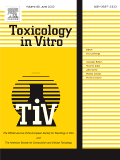>
Possible dual function of P-glycoprotein in leukemia cells: efflux pump and regulatory protein.
function goBack() { window.history.go(-1); }
Principal investigator: Zdena SulováDuration: July 2015 – June 2018
|
Annotation:Project is focused on hypothesis that P-glycoprotein besides its generally accepted role as multidrug efflux pump for large groups of lipophilic substances also play additional role as regulatory protein influencing programmed cell death progression. Several lines of evidences indicated, that this regulatory action of P-gp is independent on P-gp transport activity. Therefore, P-gp when express in cells, could depress cell sensitivity also to substances which cannot be effluxed by its transport activity. We studied this trend on mice leukemia cells L1210 in which the P-gp expression was induced either by selection for resistance with vincristine, or by transfection with gene encoding full length P-gp. We found that P-gp overexpressing cells are resistant also to endoplasmic reticulum stressors like tunicamycin (inhibitor of N-glycosylation in endoplasmic reticulum), thapsigargin (inhibitor of Ca (2+)-ATPase from endoplasmic reticulum); but also to cisplatin (chemotherapeutic that is not substrate for P-gp), and lastly to lectin Concanavalin A. However P-gp positive cells were more sensitive than their P-gp negative counterparts to another lectin from wheat germ. These results are associated with massive remodalation of cell surface saccharides in cells with upregulated P-gp. Presence of P-gp in cells seems to induce strong alteration in cell regulatory pathways including either protein phosphorylation and glycosylation or regulation of apoptosis progression. These issues we plane to study by described P-gp cell models, or by using the human leukemia cells, in which the P-gp overexpresion was induced by adaptation with chemotherapeutics like vincristine, mitoxantrone or azacytidine. |
Keywords:P-glycoprotein, leukemia, multidrug ressitance |
Objectives:Aims of this project are subjected to the detailed study of changes in the important cellular regulatory pathways, connected with the presence of P-gp in the leukemia cell line L1210, SKM 1 and MOLM 13 etc. which we have detected in the past. We will focus particularly on the changes: 1. In a quality control processes of proteins newly synthesized in the endoplasmic reticulum; 2. in the metabolism of carbohydrates; 3. in the onset and progression of apoptosis induced by cytotoxic agents that are not substrates of P-gp (5-azacytidine, cisplatin, lenalidomide, ceramides). To achieve these aims, we will solve following stages:
|
Publications: |
 |
Messingerova L, Imrichova D, Coculova M, Zelina M, Pavlikova L, Kavcova H, Seres M, Bohacova V, Lakatos B, Sulova Z, Breier A: Different Mechanisms of Drug Resistance in Myelodysplastic Syndromes and Acute Myeloid Leukemia. (Chapter 7), In Myelodysplastic Syndromes (Ota Fuchs Ed.), InTech, ISBN 978-953-51-2586-0, 2016, pp 181-200 |
 |
Pavlikova L, Seres M, Imrichova D, Hano M, Rusnak A, Zamorova M, Katrlik J, Breier A, Sulova Z. The expression of P-gp in leukemia cells is associated with cross-resistance to protein N-glycosylation inhibitor tunicamycin. Gen Physiol Biophys. 35 (2016) 497-510 |
 |
Coculova M, Imrichova D, Seres M, Messingerova L, Bohacova V, Sulova Z., Breier A. The expression of P-glycoprotein in leukemia cells is associated with the upregulated expression of nestin, a class 6 filament protein. Leuk Res. 36 (2016) 32-39. |
 |
Messingerova L, Imrichova D, Kavcova H, Seres M, Sulova Z., Breier A. A decrease in cellular microRNA-27a content is involved in azacytidine-induced P-glycoprotein expression in SKM-1 cells. Toxicol In Vitro. 36 (2016) 81-88. |
 Institute of Molecular Physiology and Genetics
Institute of Molecular Physiology and Genetics
